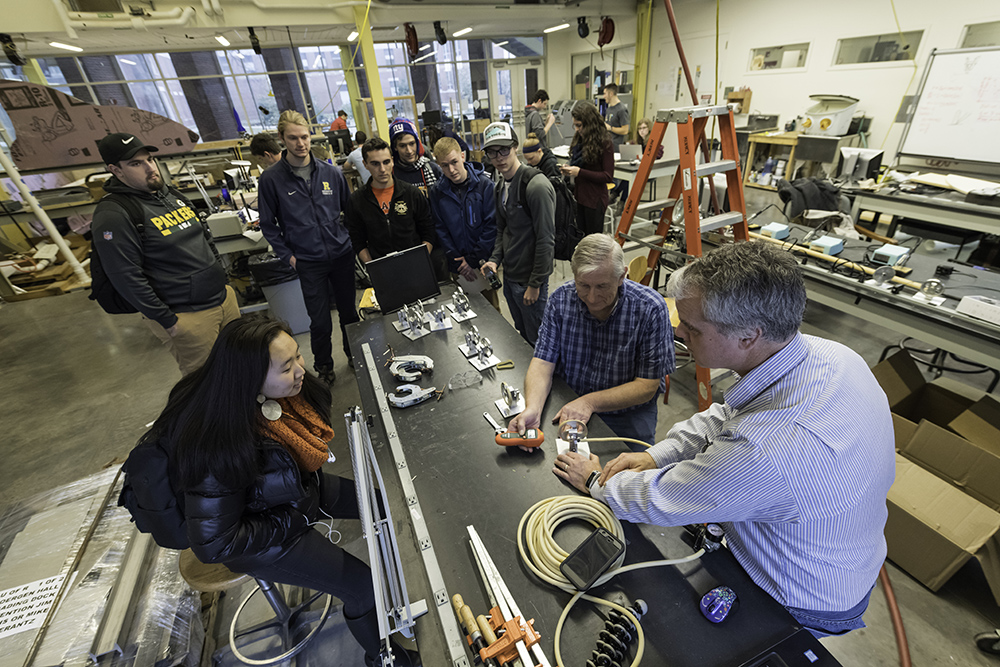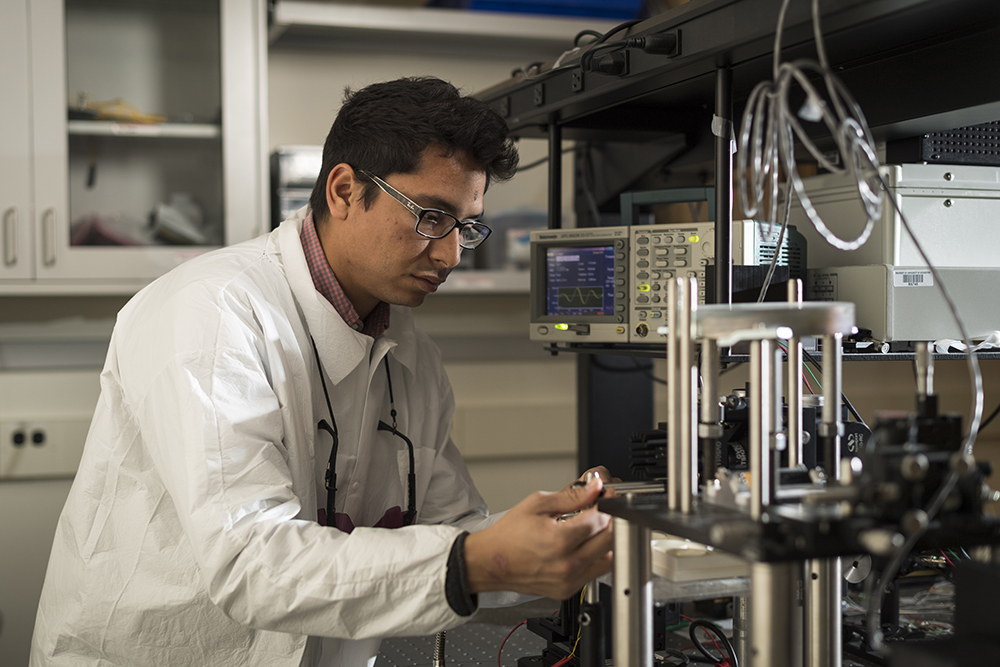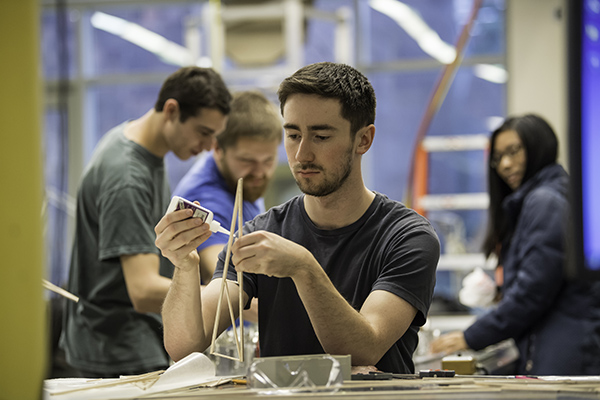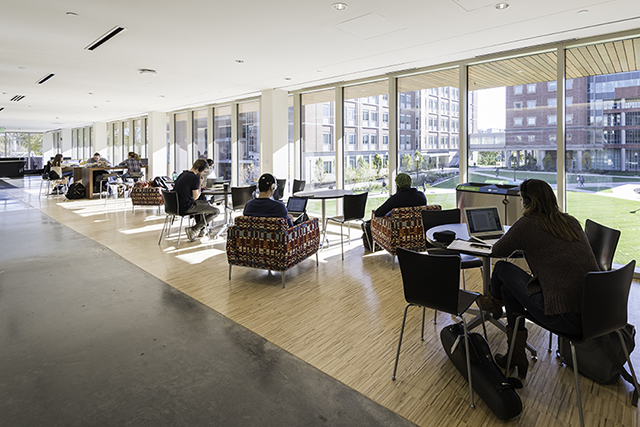Engineering the Future
Learning from and working alongside award-winning faculty, our students use state-of-the-art technology and facilities to support their unique, self-driven education.

Academic Programs
The Hajim School comprises a variety of programs, departments, and institutes, including:
- Audio and music engineering
- Biomedical engineering
- Chemical engineering
- Computer science
- Data science
- Electrical and computer engineering
- Optics and optical engineering
- Mechanical engineering
From alternative energy to transformational materials, we continually expand our program offerings to reflect current and future opportunities for research, development, and application.

Research
Across our academic departments and research centers, Hajim faculty, students, and staff are developing technological innovations with the capacity to transform our world. Our strong ties and proximity to the University of Rochester Medical Center and the Laboratory for Laser Energetics make opportunities for interdisciplinary research boundless.
Our Students

Our students conduct undergraduate research, study abroad, pursue multidisciplinary majors, and streamline their paths to graduate schools and careers. The Hajim School is part of the Grand Challenges Scholars program, which enables students to “take ownership” of their academic path, by organizing their research, global, internship, and entrepreneurial experiences around a single challenge.
Meanwhile, our nationally ranked graduate programs are recognized by U.S. News and World Report and the American Society for Engineering Education. ASEE recently included the Hajim School in its first cohort of Bronze Award engineering schools as part of its Diversity Recognition Program, signifying that we are “among the nation’s leaders in inclusive excellence” through our efforts to increase the diversity of our students, staff, and faculty.
In short, the Hajim School’s students, alumni, faculty, staff, and supporters work together to make the world ever better.
Licensure Eligibility
Professional Licensure and Certification Disclosures
Effective July 1, 2024, federal regulation requires institutions of higher education to make a determination whether a Title IV eligible academic program that leads to professional licensure or certification meets the educational requirements for licensure/certification in the U.S. state where the institution is located and the U.S. states where “distance education” students are located at the time of initial enrollment in the program, as well as U.S. states where the program is advertised as meeting such requirements, and if applicable, the U.S. state where students attest they intend to be licensed/certified. Read more about NCEES and Licensure.
The Audio and Music Engineering, Biomedical Engineering, Chemical Engineering, Electrical and Computer Engineering, Mechanical Engineering, and Optical Engineering Bachelor of Science programs at the University of Rochester’s Hajim School of Engineering and Applied Sciences are ABET/EAC accredited and thus meet the educational requirements for licensure/certification for New York State.
Through a good faith effort, and for the purpose of complying with the federal regulation, we have determined that these programs at the University of Rochester’s Hajim School of Engineering and Applied Sciences also meet the educational requirements for licensure/certification in all other states in the U.S.
However, it is important to note that the University of Rochester is not the licensure/certification authority in these U.S. States and cannot assess whether an individual candidate will be issued a license/certificate in these U.S. States and instead it is incumbent on each individual candidate to contact the licensure/certification authority in the applicable U.S. State for any further guidance on the requirements for licensure/certification requirements and application processes.

